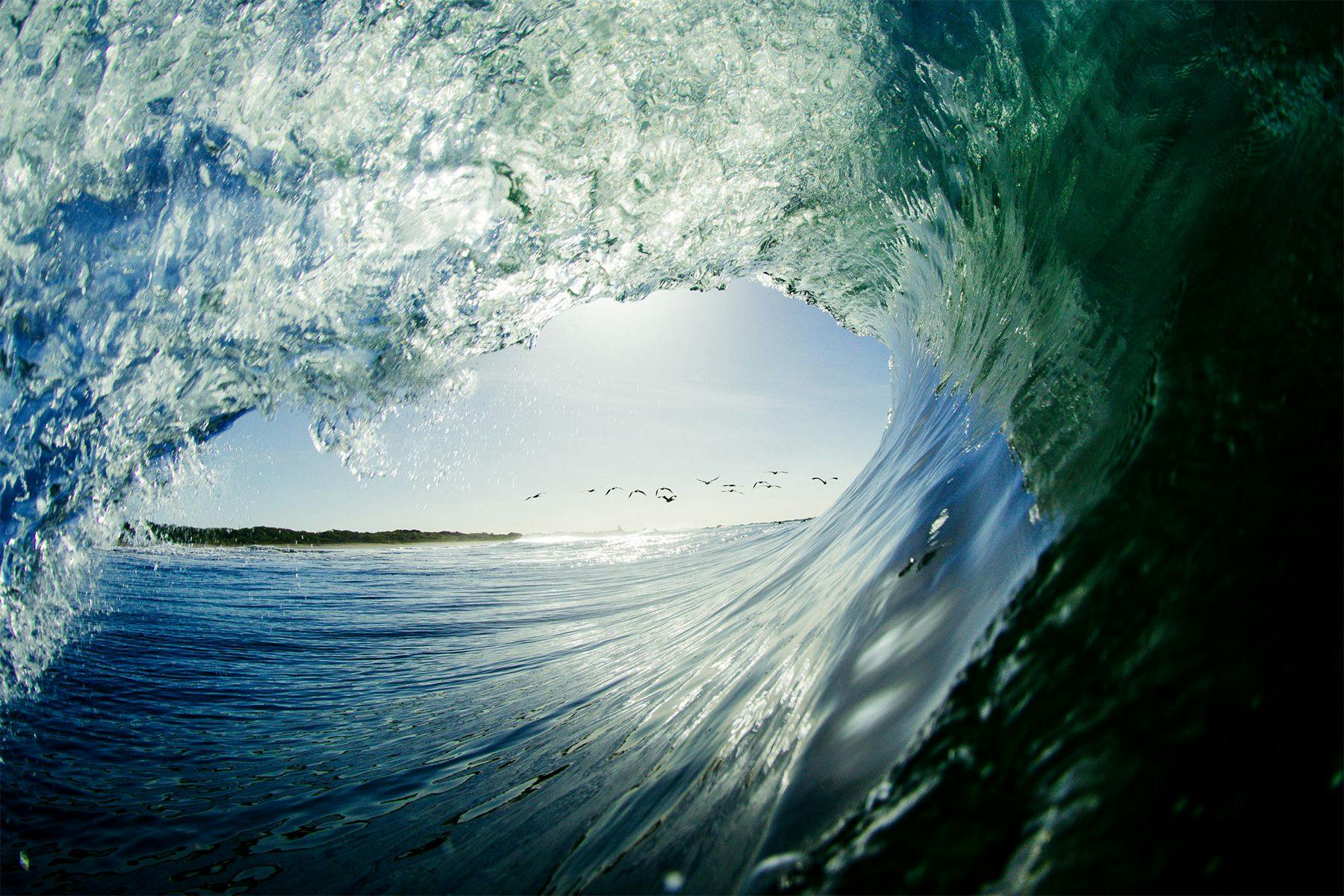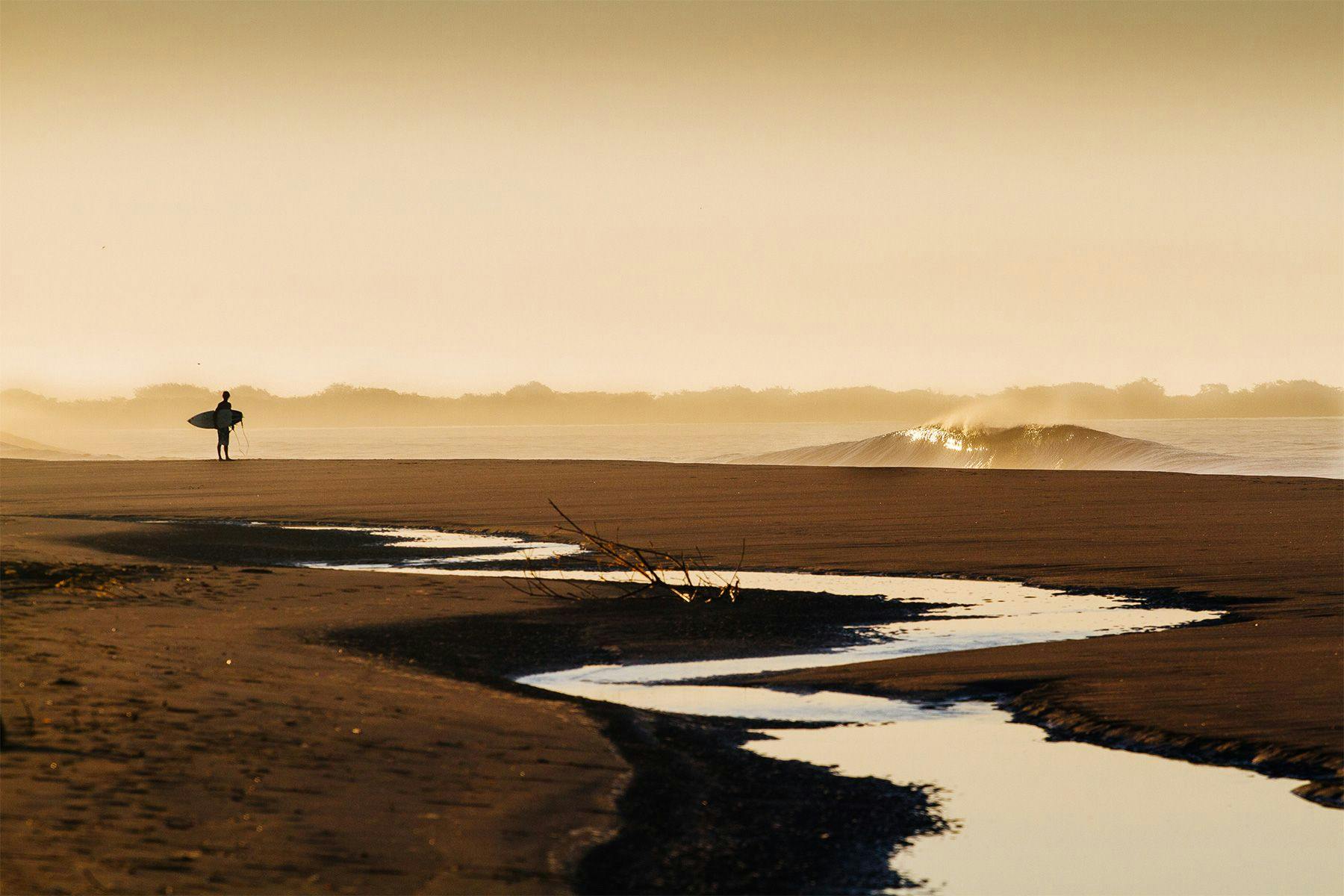TravelDeparture Gate: Nicaragua

Much like its neighbors to the north, Honduras and El Salvador, Nicaragua often falls to the background in the plans of international travellers visiting Central America. Among the reasons often cited are the country’s recent past of civil unrest and the less-developed tourism infrastructure that still lacks authority and outreach. For surfers, however, it may simply come down to comfort and opting for the variety of long point breaks in good-ol’ Mexico, the Americanized reefs of Bocas del Toro in Panama, or the fun beach-breaks of Costa Rica. But regardless of any inconveniences, one factor that remains undisputed is the high quality of waves that can be enjoyed along the Nicaraguan coast.

That Nicaragua’s Western coastline faces the Pacific Ocean at such a wide-open angle and with such ideal topography is a huge advantage. Surf spots vary from large, black-sand beaches with shallow banks to small, sheltered bays, most of which welcome swells with any hint of South in them. Yet what differentiates Nicaragua from other surf regions in the Americas rests not in its littoral zone, but inland. Dubbed by the surfing community as “The Land of Offshores”, many of the country’s surf spots – particularly those which lie on the lower half of the western coast – add weight to that title. Trade winds flow unobstructed from the Caribbean Sea, over Lake Nicaragua and Managua (massive bodies of water that carve a gap in the American Cordillera), to the Pacific coastline, creating consistent offshore winds there. In addition to near-mechanic wind patterns, the country also boasts a relatively long swell season that ranges from March to November, peaking between the end of April through to the beginning of October.

Although American Airlines operates direct flights from Florida to Managua, tickets from the US to Costa Rica remain cheaper and more readily available. But even once in Nicaragua, getting around with a coffin-sized board-bag is not that simple. Contrasting with the mellow crowds encountered in most Nicaraguan surf spots is the difficulty involved in accessing them, which often involves long missions in unreliable public transport or the need for a reliable hire car, preferably 4×4. Hence, let’s assume that you landed in San Jose, rented a car, and are heading north to Nicaragua.
The first town you are likely to stumble upon is San Juan del Sur – an area known for both its surf and party scene. Those who seek the latter may stay in town, others should head 10kms north-west on rough roads to Playa Maderas. That being said, San Juan del Sur offers more choices of accommodation, so you may wish to stay in town and drive to the beach every day. Otherwise, look for accommodation at nearby Playa Marsella, to increase your chances of skipping the crowds on sunrise/sunset sessions.
Playa Maderas is Nicaragua’s best option for beginners as well as a versatile and fun choice for more experienced surfers. The main peak (depending on the state of the sandbars and size of swell) stretches from the front of the bar-cafe area to the rocks that form the bay’s northern peninsula, and consistently produces both rights and lefts, ranging from the smallest southerly pulses up to 8ft south-west swells, when it shows its most hollow side. It is overall a playful wave, often blessed by offshores, yet quite dependent on tides – aim for low or incoming tides. Maderas’ second peak lies in front of the rocks that delineate the southernmost point of the beach. This is primarily a left-hander and hardly breaks on smaller swells. But when the pulses strengthen it provides the best barrels around. Apart from rocks, there are no hazards in Playa Madera. Locals tend to be friendly and the vibe in the water usually mellow.

Roughly 75km north of San Juan del Sur lies one of Nicaragua’s most coveted waves – both for its quality and consistency as well as its accessibility (by car) and never-ending offshores. Unlike Playa Maderas, Popoyo isn’t beginner-friendly. The inner reef starts working at 3ft and keeps producing fast and hollow a-frame walls going both right and left even when it reaches double-overhead sizes. Although not long, the waves in this section are powerful and break over shallow, urchin-laden reefs, which is something to bear in mind when paddling out.
Popoyo works through most tides and even works on swells with some north in them. When the waves get bigger, the outer reef switches on. Yet, this section is as much a mission to get to as it is to surf. Advanced surfers should dust off their guns and have a boat waiting in case of mishaps and heavy wipe-outs. Those who make the take-off, however, can revel in stand-up barrels and the achievement of having tamed the heaviest wave in Nicaragua. In contrast to the wave, the atmosphere is light.

Following Highway 3 north of Managua you will get to the town of Chinandega, the gateway to the village of Aserradores, home to Nicaragua’s most famous beach break – The Boom. Also a wave only for the experienced, The Boom begins to work its magic at 3ft but only shows its true colours over 6ft, managing to hold swells of up to 8ft. The word of the day here is “barrels”: Fast and heavy walls crash on a shallow sandbank, running right and left, often calling for late take-offs and backside rail-grabbing.
The beach is long and peaks galore. This part of the Nicaraguan coast is sensitive to westerly swells, either with a bit of south or north in it. Contrary to Playa Maderas and Popoyo, The Boom is located further from the lakes so it doesn’t benefit from super-consistent, all-day offshores. Mornings are the best time for good wind conditions and clean barrels; afternoons are good for chilling out and recovering ready for tomorrow’s sessions.

In the last few years, Nicaragua has developed both as a tourist destination as well as a surf destination. The main hassle for surfers remains to get to the spots without a car, particularly if you wish to explore different areas. Other than that, Nicaragua is as appealing – if not more – than other Central American countries when it comes to surf trips: the waves are plentiful and relatively uncrowded, the weather is fine (avoid the worst of rainy season between September and November), and the cost of living is lower than Costa Rica, Panama, Mexico, and even El Salvador. Those who wish to more than surfing can venture into some of the country’s Nature Reserves, try volcano boarding, visit the island-volcano of Ometepe on Lake Nicaragua, or visit the calmer waters of the Caribbean coast.

Where: Fly to San Jose International (SJO) and drive to Nicaragua or catch a connecting flight to Augusto Cesar Sandino International Airport (MGA) in Managua.
When: April to October.
Why: High-quality point, reef and beach-breaks with warm water and few visiting surfers.
How: A selection of shortboards and a step-up or semi-gun for bigger days.